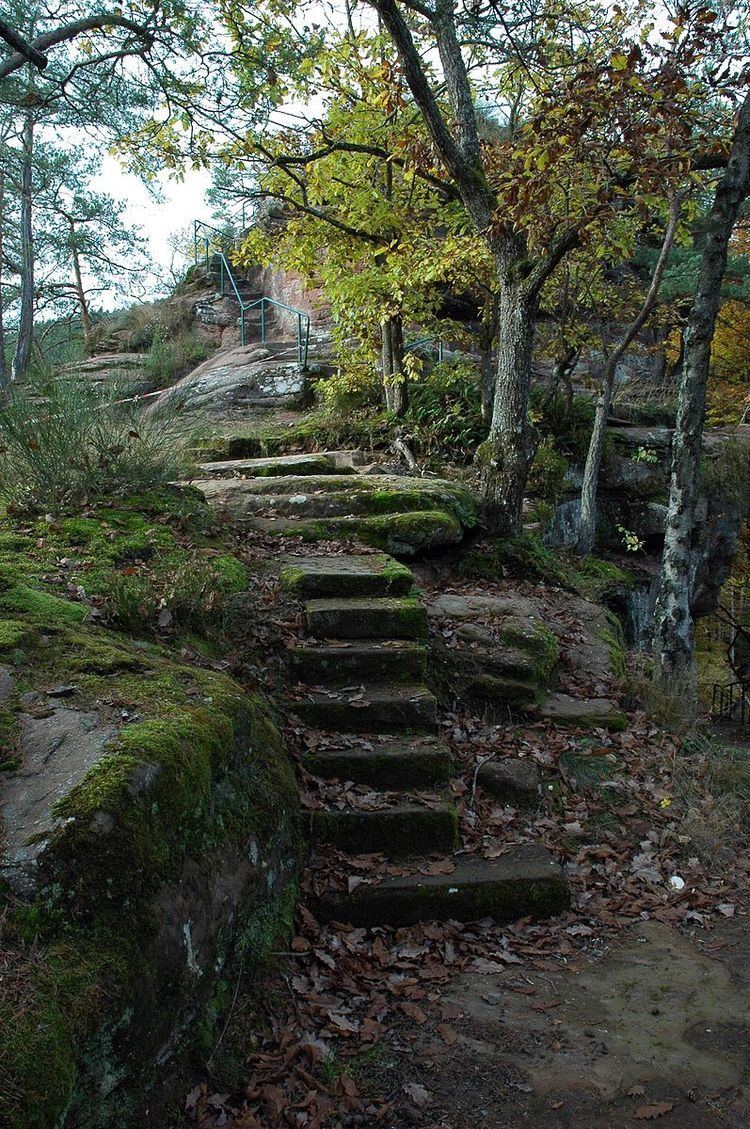Condition wall remains | Code DE-RP Built around 800 to 1000 | |
 | ||
Height 245 m above sea level (NN) Similar Falkenburg Castle, Ramburg, Burghalder, Burg Meistersel, Neudahn Castle | ||
Die wilgartaburg
The Wilgartaburg, also called the Wiligartaburg, Wilgartsburg or Wiligartisburg, is the heritage site of a ruined rock castle located at a height of 245 m above sea level (NN) near the German village of Wilgartswiesen in the state of Rhineland-Palatinate.
Contents
- Die wilgartaburg
- Tour wilgartaburg wellbachtal kirschfelsen no 43 1 2
- Location
- History
- Layout
- Literature
- References
Tour wilgartaburg wellbachtal kirschfelsen no 43 1 2
Location
The remains of the former hill castle are located near Wilgartswiesen before the Rinnthal at around 245 metres above sea level on a spur of the Göckelberg hill above the River Queich. This left tributary of the Rhine rises in the Wasgau region which comprises the southern part of the Palatinate Forest in Germany and the northern part of the Vosges in France.
History
The Wilgartaburg is one of the oldest castles in the Palatinate region, probably dating to the 8th or 9th century. According to an unverified source it was built in the late 10th or early 11th century by an abbot of Hornbach Abbey, initially as a wooden castle. In the Salian era (11th century) it was rebuilt in stone. This was expanded in the 12th century and a final remodelling took place in the 13th century. The castle was probably abandoned at the end of the 13th century in favour of the better situated Falkenburg Castle.
According to legend, after the death of her husband, Gaugrave Wernher I, his widow, Wiligarta, led a hermit's life here as penance to atone for his dissolute life. On 16 April 828, her granddaughter, also called Wiligarta and the daughter of Wernher II, donated her estate, Wiligartawisa, with all the fields, pastureland and woods within which the castle stood, to Hornbach Abbey.
Layout
All that survives of the castle are a few wall remains, numerous putlog holes and rock chambers.
